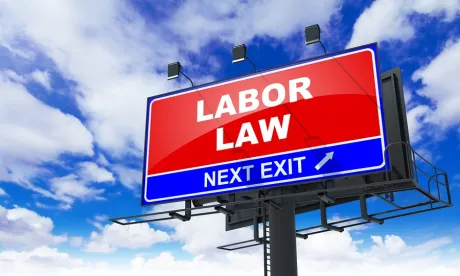The national conversation around union organization – increasingly lively of late – has focused on “new” players, whether grassroots unions, college-educated employees in the service industry, or professionals in the technology and politics realms. Meanwhile, in the more “traditional” labor union world of manufacturing, the percentage of private workers represented by unions has steadily declined since 2017. What should manufacturing employers do in these shifting winds? Pay attention.
The economic, social, and political backdrop behind the current labor movement is not limited to progressive baristas: union approval is the highest it has been since 1965, with nearly 50% of Republicans and 90% of Democrats in favor. And union representation petitions filed with the National Labor Relations Board (NLRB) were up almost 60% between October 2021 and March 2022 compared to the prior six months. Manufacturing workplaces are by no means on the sidelines here. Indeed, as we saw last year in so-called “Striketober,” the tight labor market has motivated unionized manufacturing employees to leverage their coveted skills to demand better working conditions.
Moreover, from a legal perspective, the NLRB’s General Counsel has pushed to eliminate employers’ current rights in the union representation election process. Since 1969, employers have generally been able to require an election by refusing to recognize a union based only on an alleged majority of union authorization cards. But in April 2022, the NLRB General Counsel argued in Cemex Construction Materials Pacific v. International Brotherhood of Teamsters that employers must show good-faith doubt as to the validity of authorization cards in order to avoid bargaining with a union. It’s unclear what might constitute a good faith doubt.
For automotive industry employers who already have unionized employees, as we detailed in our Top Legal Issues Facing the Automotive Industry in 2022, the NLRB is now dominated by appointments by President Biden and along with the Board’s General Counsel, unionized employers can expect to see a great expansion of union rights.
Given the current union-friendly climate, employers would be wise to monitor trends in non-traditional labor organizing, including:
-
Unions have embraced social media to proliferate their message and garner support, sometimes from high-profile celebrities and politicians.
-
Unions have highlighted the negative impact of the COVID-19 pandemic on employee safety and staffing issues.
-
Unions have sought to sow skepticism of oft-used “union avoidance” campaigns.
Finally, notwithstanding the labor movement’s new contours, automotive employers should stick to some basics:
-
Understand your facilities’ labor relations and your employees’ concerns. Employees who feel their voices are not heard may be more inclined to unionize. If your communication approach is one-way and top-heavy, it is time to rethink the approach.
-
Train your supervisors. In the same vein, mid-level supervisors should be trained in how to effectively listen to employees and communicate your policies in a way that fosters trust and buy-in.
-
Take stock of working conditions. Employees who feel they are subject to unsafe environments, or that they receive uncompetitive compensation or other terms, may too seek strength in numbers to bargain on such issues.
-
Look up and down the supply chain. If your partners in production, transportation, or warehousing are unionized, the environment may be riper for labor organizing.
-
Consider the breakdown of your workforce. If your organizational structure creates so-called “micro-bargaining units,” consider whether you can make changes to job classifications or duties to streamline your positions and increase any potential voting pools.
-
Hone your message. Trotting out the old line that unions will inhibit flexibility and interrupt direct communication may not be as compelling in this new dawn of grassroots organizing. You should be able to convincingly address employees’ concerns while highlighting the benefits of remaining union-free.





 />i
/>i
